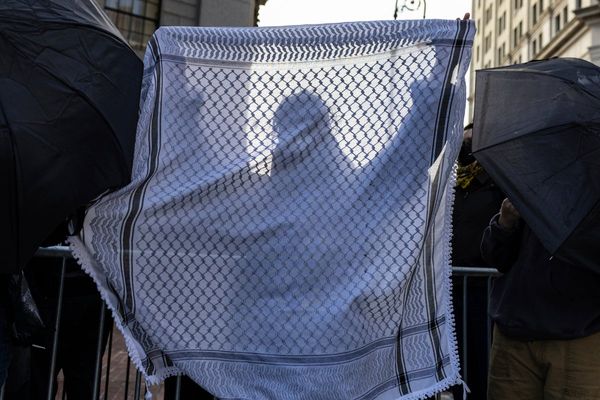
When the Denver Nuggets landed star forward Aaron Gordon at the trade deadline last season, they knew they were getting a special player. But they likely couldn’t have imagined just how important he would soon become to the success of their franchise.
Gordon’s impact was immediate, as Denver ran off seven straight wins from the moment he first donned a Nuggets uniform. But injury misfortune would quickly elevate his importance even further, with the long-term loss of two of the Nuggets’ three maximum contract players. Jamal Murray, longtime co-pilot to now-MVP Nikola Jokic, would go down with a torn ACL just weeks after the trade, and then early this season rising star Michael Porter Jr. suffered a surgery-requiring back injury, leaving both players projected to be sidelined for close to a year. In their absence, Gordon, who himself reached a four year, $92 million extension deal with Denver last offseason, has had to step up into a larger role.
And while Gordon’s fit was instant, the chemistry he and Jokic have developed in their burgeoning two-man game has been reaching new levels this season as their understanding of each other’s games has deepened and become more second-nature. And while it’s arguable based on on/off court differentials that Jokic is singlehandedly the most responsible for that success, it is reflected in the relative dominance of the Nuggets’ current starting lineup of Jokic, Gordon, Monte Morris, Will Barton III and Jeff Green, which among all NBA lineups with at least 400 possessions is third best in outscoring opponents, with a third-best plus-10.5 points per 100 possessions differential.
To take a closer look at this blossoming chemistry, I’ve broken down the film on many of their assists to each other, and the various ways they deploy their size, playmaking skills and, in Gordon’s case athleticism to create advantages for Denver’s offense.
(All statistics are from NBA.com and Cleaning the Glass.)
The Blossoming Jokic And Gordon Two-Man Game
When I asked Nikola Jokic last week if he thought his two-man game with Aaron Gordon was reaching a similar level of chemistry as his highly successful pairing with Jamal Murray, he was a bit equivocal. “They're not the same players,” Joker answered, “so maybe chemistry-wise, maybe. But it's not the same act.”
One aspect which stands out in support of his point is that, by comparison, his duo with Gordon is less mutual, especially when it comes to pick-and-roll (PnR) and dribble handoff (DHO) actions, in large part due to Gordon not being the primary ball handler and self-creator that Murray is. Even so, this newer two-man game is proving to be extremely effective.
In PnRs with Jokic, Gordon has developed a masterful sense of where to set screens and when to slip them for perfectly-timed rolls to the basket, or alternately to curl around Joker’s post-ups to receive DHOs that reliably result in a clear path to the basket.
Much of this plays off of Jokic’s immense gravity, which frequently sees him drawing double- or even triple-teams due to his ability to score or playmake from literally every spot on the court. But Gordon’s growing sense of how to time his movements in a complementary fashion to optimize that gravity makes it all the more potent.
One of their favorite actions to run, as seen in the latter clips of the above video, is to have Jokic post up in the low or mid post, with Gordon curling around his screen to take the DHO and go baseline. Part of the effectiveness of this play is that Jokic is simply massive, making it tough for defenders to chase Gordon around his formidable screens. But his scoring threat also often results in a switched defender being a half-step behind as well for fear of leaving Jokic open.
When the connection flips and it’s Gordon feeding Jokic assists out of their two-man game, it often occurs on interior paint passes, often on a drive attacking closeouts.
Gordon’s own gravity as a scoring threat around the rim is often made use of here, as help defenders peel off Jokic to try to provide rim protection, opening the door for dump-off passes in close range of the basket.
So Many Entry Passes
Big-to-big passing, often initiated by nearly seven-foot Jokic, has long been one of the Nuggets’ greater strengths, and he and Gordon are certainly making the most of it now. Joker’s height and length affords him not only the ability to fairly easily pass right over defenses, but to have the sight lines – in combination with his superlative court vision and awareness – to find his targets.
Aaron Gordon is shooting 74% at the rim this season, placing him in the 94th percentile among forwards, but moreover, almost half of his shots, 47%, are being taken around the basket. His understanding and ability to get behind defenses to receive Jokic’s entry passes is elite, and Joker wastes no opportunity to feed him (to borrow Paul Millsap’s phrase) cheeseburgers. Size is a major factor here, too, as Gordon has the strength to battle for position down low to stay within close range of easy buckets. But even when he doesn’t get right up at the hoop, his post play is strong enough to make Jokic getting it to him in the post a high-efficiency shot as well.
These entry passes are a two-way street, however, and Gordon is very much a sufficiently proficient playmaker to return the favor and get the ball to Jokic inside. Like Gordon, Jokic has a superb at-rim percentage of 76%, and when he receives the ball that close to the basket, it’s usually easy money.
Movement: Cuts And Transition
As any player who’s spent time on the court with Jokic knows well: If you cut, he will find you. And it just so happens that, with his athleticism, finishing ability and (again) awareness of timing, Aaron Gordon is an elite cutter who is custom-designed to make the most of Joker’s passing prowess.
Watch on the second play above, as Gordon sets a secondary screen for Monte Morris out of his PnR with Jokic, recognizing that R.J. Barrett got caught in a miscommunication on the switch, and instantly sprinting to the rim before Evan Fournier has a chance to sufficiently recover (not that with his size disadvantage he’d likely to have been able to stop Gordon anyhow). While we saw some of this last season, his sense of when precisely to slip the screen has reached new levels this time around.
Although fast break run-outs are obviously a different type of action than halfcourt cuts (or getting behind the defense for entry passes), Gordon employs many of the same skills, timing and other principles, albeit at a faster pace. He is consistently the Nuggets’ first man down the court in transition, as when Jokic is ever even remotely close to going after a rebound, he’s off and running.
Head coach Michael Malone recently addressed on key aspect of Gordon getting these early-possession passes at the basket, noting that “sometimes the best way to really get him the ball is, he's guarding the other team's best small, so in transition when we get cross-matched, he's got a small guarding him in the post the first 6 seconds of the shot clock.”
This can clearly be seen in several of the clips above, with players like De'Anthony Melton (six-foot-two), Tyrese Maxey (six-foot-two) and Josh Hart (six-foot-five) all getting stuck guarding Gordon at a severe size disadvantage.
And of course, Gordon is happy to return the favor in finding Jokic on cuts and in transition.
In transition, Gordon’s ability to lead the break with good speed for his size means that – although it happens far more often that he’s receiving lead passes from Jokic – he will sometimes find a trailing Joker to cut, drive, or give-and-go in for fast break buckets.
Three-Pointers In Rhythm
While Aaron Gordons overall three-point percentage this season is34.1%, not unrespectable considering his career 32.2% average, a full 24 of his 28 made threes this season, or about 86%, have been assisted, with just 4 being unassisted. And a big share of that assist credit goes to Jokic, who not only is great and finding Gordon shots in rhythm, but also (again) using his gravity to make those shots wide open.
When Jokic has the ball in the paint, defenses consistently collapse around him, inevitably leaving at least one or two of his teammates open. And when Gordon is on the perimeter, where opposing defenses generally don’t see him as one of Denver’s bigger threats, he’s often that guy. Jokic’s patience in waiting to draw in defenders, combined with his exceptional ability to pass over and out of difficult, crowded situations, allows him to create some of the better looks from three for Gordon that just about any NBA player could ask for.
And as we’ve seen above, Gordon is always more than willing to reciprocate, often likewise using his threat at scoring in the paint to pull in defenses before kicking out.
Conclusion
If Jamal Murray does make a successful return before the end of the regular season and into the playoffs, it will be interesting to see how this newer Jokic and Gordon two-man game will fare. But in the meantime, for at least the bulk of this regular season, it has become the Nuggets’ new bread and butter of their offense, which is great and reassuring news for a team so badly decimated by injuries, and so desperately in need of players outside of Jokic himself to step up into larger roles.







